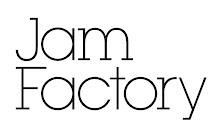Prototyping: Making Ideas provides audiences with a rare opportunity to learn about the processes and stories behind the design and development of a succesful product.
Adam Goodrum
The journey from ideas and sketches, through prototypes to final product, can be a long process and it is rare that just one prototype of any design is created. Through presenting early prototypes at various stages Prototyping: Making Ideas plots this challenging and exciting trial and error stage.

Trent Jansen
Trent Jansen’s practice is focused on creating sustainable design, through developing pieces that maintain a lasting relationship with their user. To develop this lasting relationship he imbues his designs with references to some of most powerful human relationships such as the bond between mother and child (Pregnant Chair, 2008)
With a firm belief that a prototype should be fully functional and at 1:1 scale, Jansen worked with furniture maker Jon Goulder to produced the first prototype of the Pregnant Chair. From this he refined the design before sending technical drawings to Moooi.
Moooi went on to produce further prototypes. Working with an International company did at first present challenges, as images rather than a physical prototype were sent to Trent to refine areas of the design. Trent worked closely with Bart Schilder, Moooi’s product developer on the incremental improvements; sketches of details were sent back and forth—Jansen sending line drawings Schilder returning computer renderings. From these two different ways of working, a second set of technical drawings were developed and the final prototype created.

 |
| Adam Goodrum's Chatterbox Prototype |
Adam Goodrum
The development of functional, full-scale prototypes is a key characteristic of furniture and object design in this country and has contributed to the international success of many Australian designers, Adam Goodrum has been working with Italian company Cappelini for the production of his Stitch chair whilst and Trent Jansen has work produced by Moooi in the Netherlands.
When prototyping a new design Adam Goodrum, regularly creates a 1: 1 scale cardboard model, this scaling is extremely important to him as it allows him to walk around the object, to get a feel for the object in space, and to see how people will engage with it, whilst questioning its size, comfort and suitability.
The journey from ideas and sketches, through prototypes to final product, can be a long process and it is rare that just one prototype of any design is created. Through presenting early prototypes at various stages Prototyping: Making Ideas plots this challenging and exciting trial and error stage.

Trent Jansen
Trent Jansen’s practice is focused on creating sustainable design, through developing pieces that maintain a lasting relationship with their user. To develop this lasting relationship he imbues his designs with references to some of most powerful human relationships such as the bond between mother and child (Pregnant Chair, 2008)
Pregnant Chair is two Beech chairs, the smaller of which fits exactly within the lines and space of the bigger chair. The chairs though not 100% identical resemble each other like a child does their parent. Pregnant Chair is being produced by Dutch design firm Moooi. Trent had spent time in the studio of Marcel Wanders in 2004, (as well as running his own design studio Wanders is the creative director of Moooi), however it took him several years to build up the courage to send Wanders a design to consider.
With a firm belief that a prototype should be fully functional and at 1:1 scale, Jansen worked with furniture maker Jon Goulder to produced the first prototype of the Pregnant Chair. From this he refined the design before sending technical drawings to Moooi.
Moooi went on to produce further prototypes. Working with an International company did at first present challenges, as images rather than a physical prototype were sent to Trent to refine areas of the design. Trent worked closely with Bart Schilder, Moooi’s product developer on the incremental improvements; sketches of details were sent back and forth—Jansen sending line drawings Schilder returning computer renderings. From these two different ways of working, a second set of technical drawings were developed and the final prototype created.

Sasha Titchkovsky and Russel Koskela
Started in 2000 by Sasha Titchkovsky and Russel Koskela, Koskela’s Sydney showrooms, presents a refreshing approach for Australian design. Their collection focuses on sustainable furniture design and manufacturing, presented alongside a carefully considered array of objects and homewares by local designers and artisans.
Through its commitment to quality and innovation, Koskela works directly in partnership with a number of suppliers, manufacturers, and craftspeople to create its unique homewares and interiors. Successful collaborations include the celebrated lampshade made with the Indigenous weavers from the Elcho Island and Mapuru Homeland, as well as recent projects with the glass and ceramic departments at JamFactory.
The klassikko dinner set produced in collaboration with JamFactory’s ceramics studio highlights the time that prototyping may take especially in a medium such as ceramics, where various clay bodies and glazes must be tested to consistently achieve a desired result.
This range has been designed with glaze inside and on the lip, whilst the outside is left unglazed. The main concern for the studio was to find clay body that would reach a suitable level of vitrification, to ensure the exterior unglazed surface remained white and stain-resistant as possible.
Though the original prototypes were wheel-thrown, the range will be produced using the jigger/jolly- a semi-industrial machine that enables the production of exact replicas of each item from moulds.
Prototyping: Making Ideas exhibits at The JamFactory, Gallery One from 3 September to 23 October.



















